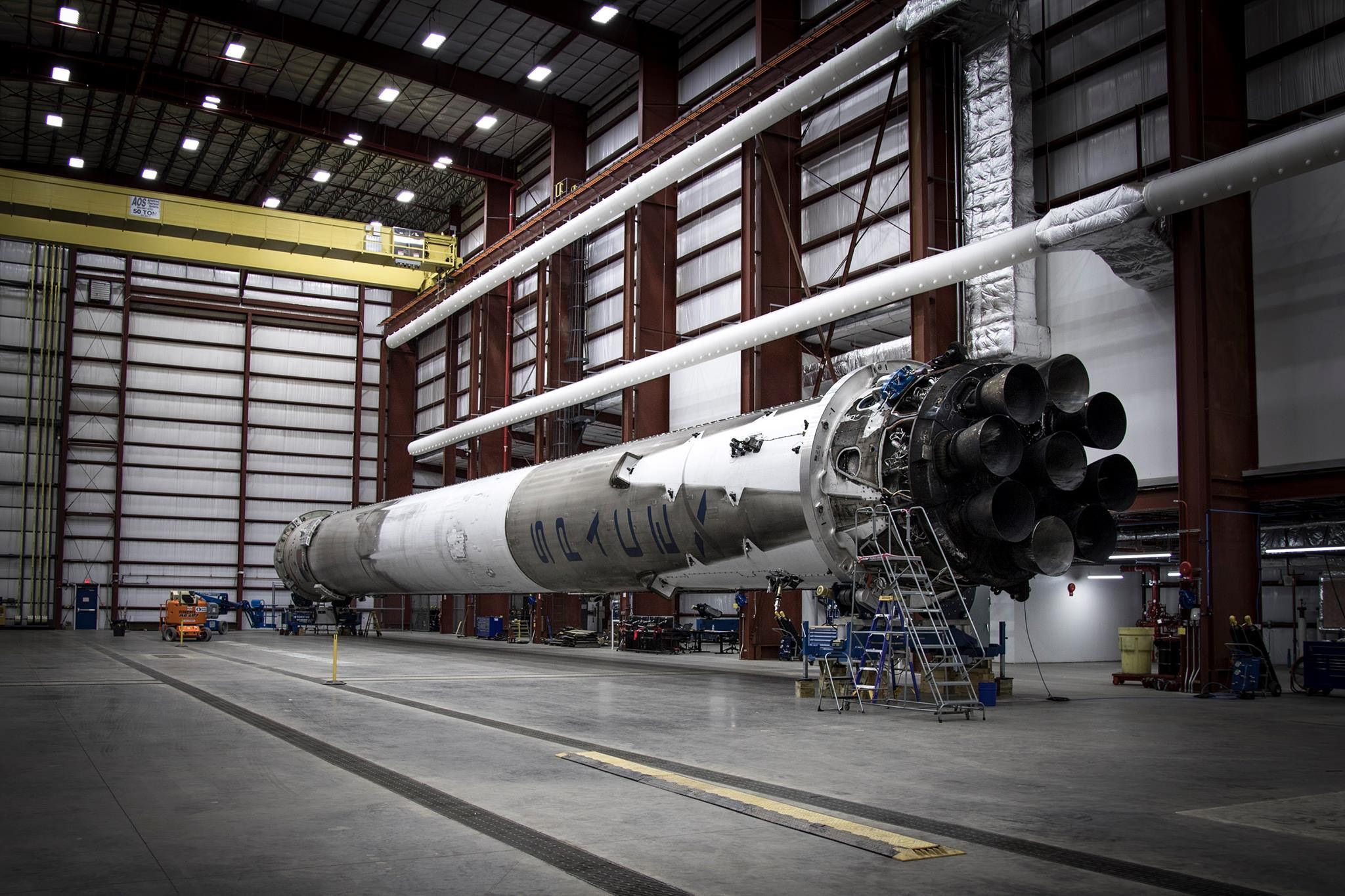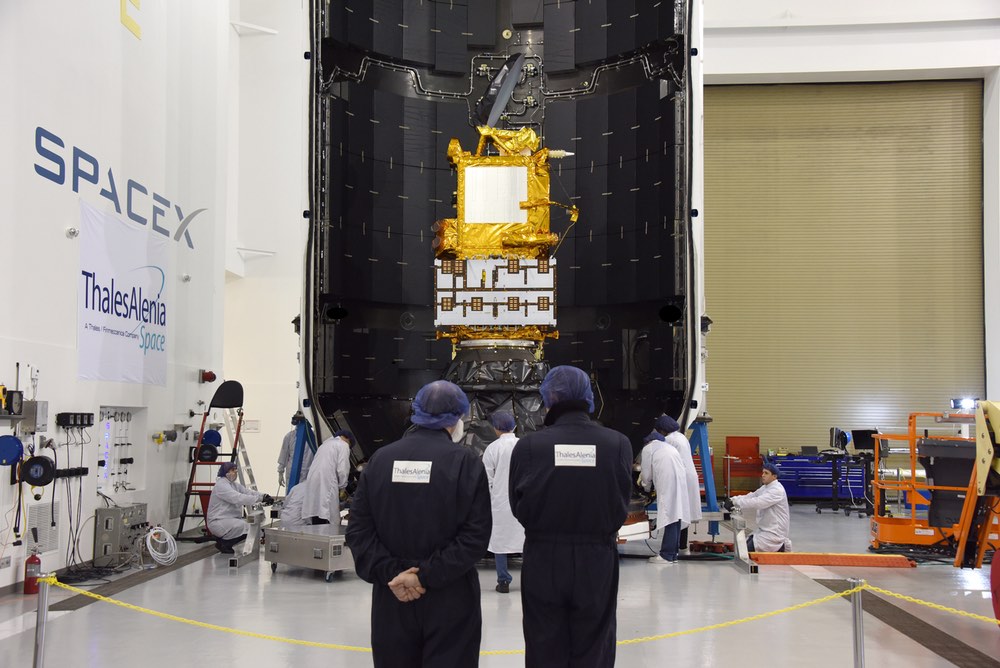SpaceX Tests Recovered Falcon 9 Stage and Prepares for Next Launch

WASHINGTON — SpaceX carried out a test of a recovered Falcon 9 first stage late Jan. 15 as the company prepares for its next launch and landing attempt.
Speaking at a press conference at Vandenberg Air Force Base, California, about the scheduled Jan. 17 launch of the Jason-3 ocean science satellite on a Falcon 9, SpaceX vice president of mission assurance Hans Koenigsmann said the company conducted a static fire test of the Falcon 9 first stage the company landed Dec. 21.
"Apparently it went very well," Koenigsmann said of the test, which he said the company had "just completed" back at Cape Canaveral, Florida. He did not offer more details about the test, saying he has been focused on the upcoming Jason-3 launch. [SpaceX's Epic Falcon 9 Rocket Landing in Pictures]
Elon Musk, the chief executive of SpaceX, confirmed in tweets that the company had just conducted a static test firing of the Falcon 9 first stage. "Data looks good overall, but engine 9 showed thrust fluctuations," he wrote.
The engine in question, he said, is an "outer engine" on a ring of eight that surround a center engine. Musk suggested "debris ingestion" might be the cause of the thrust fluctuations, with more study of the engine planned.
SpaceX set up the stage on its launch pad at Launch Complex 40, the same pad where the rocket lifted off Dec. 21 on a mission to deploy 11 Orbcomm second-generation satellites. After stage separation on that flight, the stage returned to the Cape, landing at a decommissioned launch site known as "Landing Zone 1" by SpaceX several kilometers south of the launch pad.
SpaceX later moved the first stage to a hangar adjacent to Launch Complex 39A, the former space shuttle pad SpaceX is leasing from NASA and renovating. The company originally planned to carry out the static fire test, a way of demonstrating the potential reusability of the vehicle, at that pad, but moved the stage back to Launch Complex 40 instead.
Get the Space.com Newsletter
Breaking space news, the latest updates on rocket launches, skywatching events and more!
"That booster is in great shape," Koenigsmann said at the press conference. "We inspected it. We found nothing out of order."
The first stage landing was widely hailed as a major milestone in SpaceX's efforts to make a reusable version of the Falcon 9, although Musk said after the launch there were no plans to refly the stage. SpaceX would instead attempt to refly a stage landed during one of the company’s launches planned for this year.
The next opportunity to land a stage will come Jan. 17 with the launch of Jason-3. Unlike the December flight, where the stage returned to Cape Canaveral, the Falcon 9 first stage on this mission will instead land on a "droneship," a floating platform in the Pacific Ocean nearly 300 kilometers downrange from the launch site.
Koenigsmann said SpaceX is doing the ship landing on this mission because it was not able to secure environmental permissions in time to permit a landing back at Vandenberg. "We could land back on land" were it not for the paperwork issue, he said. "We have enough energy on this mission to come back to land. It’s not anything technical."
SpaceX, though, has suggested some future launches might require a landing at sea because the stage doesn't have the energy required for a return to land. That would likely be the case on missions where the payload is heavy enough for the required orbit to prevent the first stage from retaining enough propellant to execute a return to the launch site.

The landing attempt on the next Falcon 9 launch nearly overshadows the launch itself. At the Jan. 15 press conference, NASA and SpaceX officials reported no issues with the launch vehicle or satellite that could delay the 1:42 p.m. Eastern launch Jan. 17. Forecasts predict no weather issues as well.
For those involved with the mission, the launch has been a long time coming. The launch has faced a number of delays, including one of nearly six months caused by last year's Falcon 9 launch failure. "We've been waiting for this launch for well over two years now," said Jim Silva, Jason-3 program manager at the National Oceanic and Atmospheric Administration.
Even scientists involved with the mission, though, were excited about the prospects of both a successful launch and landing. "We're excited to get a ride to space and we hope SpaceX breaks a leg — but not literally a leg," said Josh Willis, Jason-3 project scientist at the Jet Propulsion Laboratory.
This story was provided by SpaceNews, dedicated to covering all aspects of the space industry.
Join our Space Forums to keep talking space on the latest missions, night sky and more! And if you have a news tip, correction or comment, let us know at: community@space.com.

Jeff Foust is a Senior Staff Writer at SpaceNews, a space industry news magazine and website, where he writes about space policy, commercial spaceflight and other aerospace industry topics. Jeff has a Ph.D. in planetary sciences from the Massachusetts Institute of Technology and earned a bachelor's degree in geophysics and planetary science from the California Institute of Technology. You can see Jeff's latest projects by following him on Twitter.











